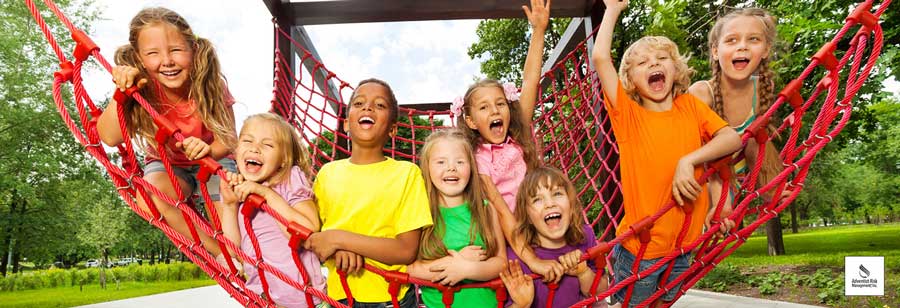Jesus said; “Let the children come to me, for such is the kingdom of God!” It is a great sight to see children playing. Although children may not know the hazards involved with such activity, church leaders are responsible for providing a safe environment and properly maintained equipment. Children should enjoy playing with the assurance that they will not be hurt or injured.
Safety on the playground requires planning, thought, training, and deliberate action. Proper selection, placement, and maintenance of playground equipment, along with effective supervision of playground activities, can help prevent accidents and reduce their severity. Playground safety can be divided into five areas:
- Adequate, trained, equipped, and attentive playground supervision
- Surface area
- Equipment
- Open and hidden hazards
- and a First Aid Plan.
SUPERVISION
This is the most important part of the program. Don't leave unsupervised children on the playground. The National Program for Playground Safety (NPPS) recommends that the basic playground supervision ratio be equal to the indoor classroom ratio at the school. Additionally, a certified teacher or trained volunteer must be available to monitor the children. Younger students may need more supervision at recess. Some schools have developed a youth leader program so that older students lead games with younger ones. The key to good supervision is to have knowledge of child development and active group management and leadership skills.SURFACE AREA
More than 100,000 children in the United States go to emergency rooms every year due to a fall on the playground surface. Replace hard surfaces with materials that are soft enough to cushion the fall, such as hardwood fiber, rubber pellets or rubber mulch, or sand. This substance should be filled up to a depth of at least 12 inches. The area of this covering should extend at least 6 feet around the play area.PLAY EQUIPMENT
One of the duties owed to students on the school playground is to provide safe facilities and equipment. All equipment should be in a safe location, designed and installed by a licensed company and meeting the standards prescribed by the Consumer Product Safety Commission (CPSC).The CPSC* lists certain types of equipment that should not be placed in neither public nor private playgrounds due to its injury potential, including:
- Hard animal-shaped swings and hard wheelchair swings
- Multiple occupancy swings (except for tire swings)
- Rope swings
- Swinging dual exercise rings and trapeze bars
- Trampolines
- Equipment over 10 feet high.
OPEN / HIDDEN HAZARDS
Does your playground contain any protrusion/entanglement hazards? An entanglement hazard is anything that could catch an item of clothing like a drawstring from a hood etc. If your playground has anything extending out that could cut and injure someone, remove it immediately.If there is not enough space between pieces of play equipment, children can fall off one structure and strike the other. Each piece of equipment should have sufficient free space around.
Exposed concrete footings, abrupt changes in surface elevations, tree roots and rocks should be removed and the play area kept free of any debris.
FIRST AID PROGRAM
In the case of any emergency, the supervisors should have a thorough knowledge of administering first aid, and also should have gone through CPR training.Want to know more about preparing your grounds and facilities before the school season? Visit ARM’s Child and Youth Activities page and ARM’s School page.


